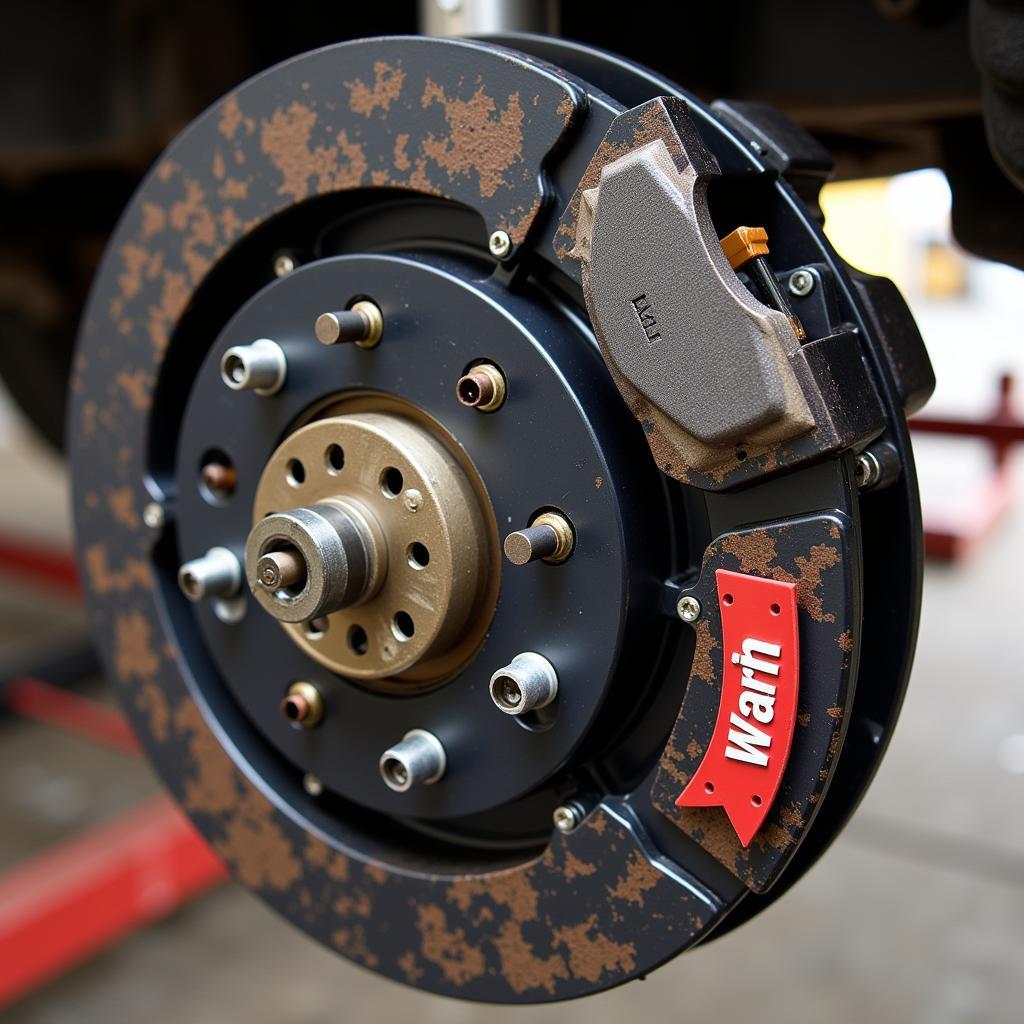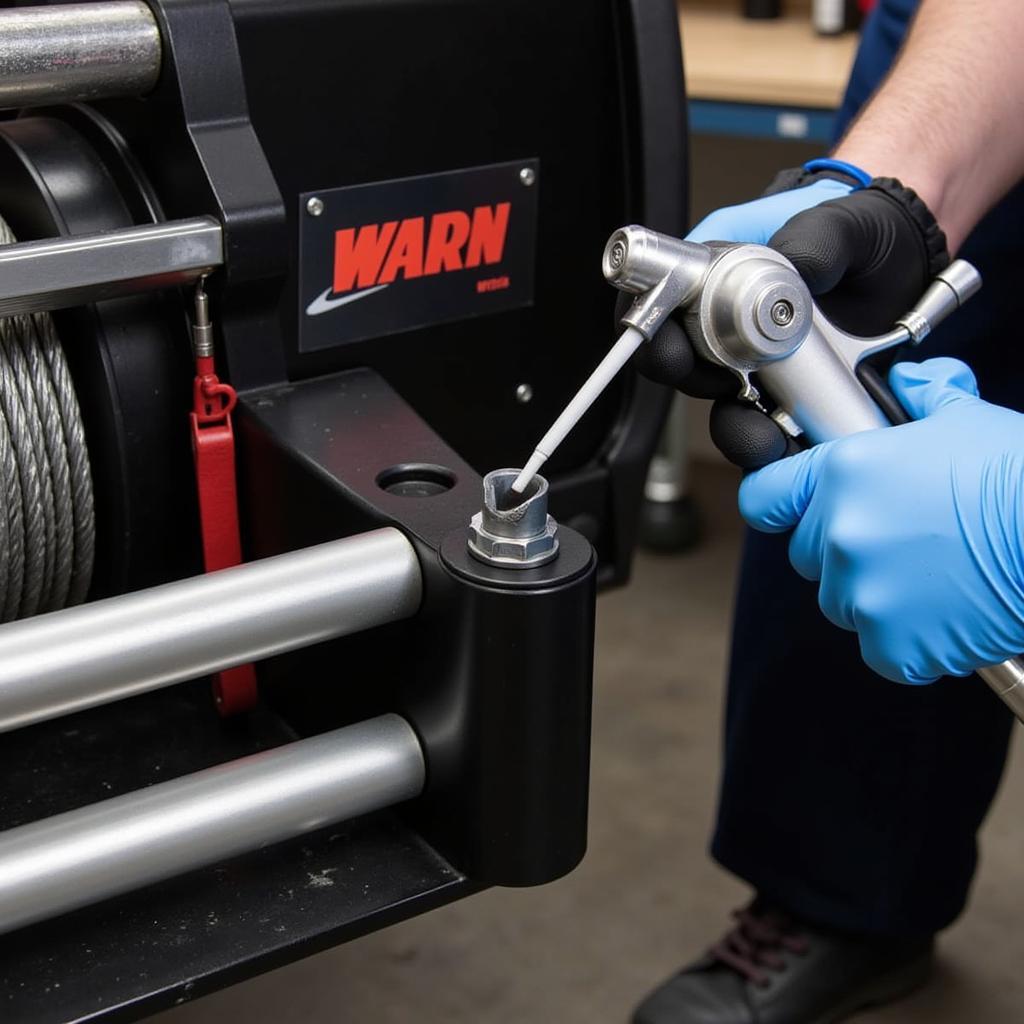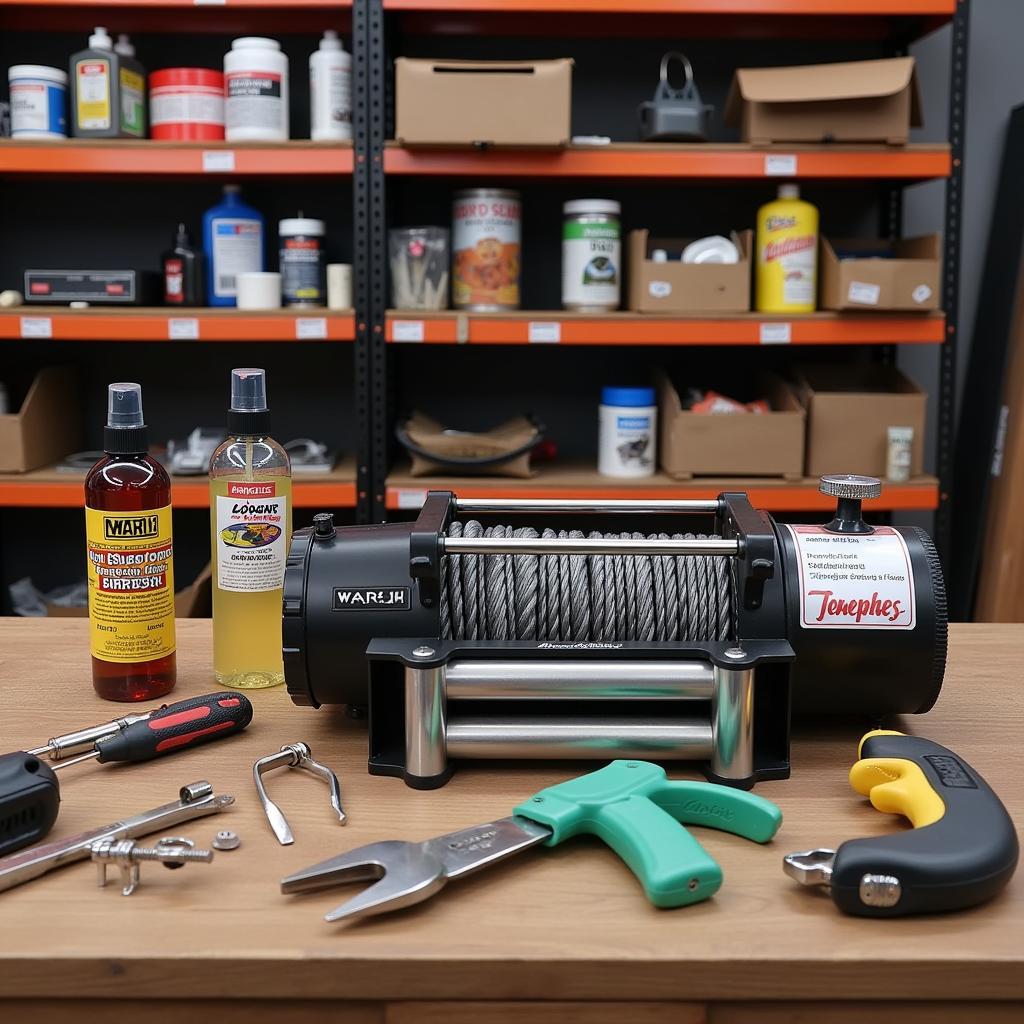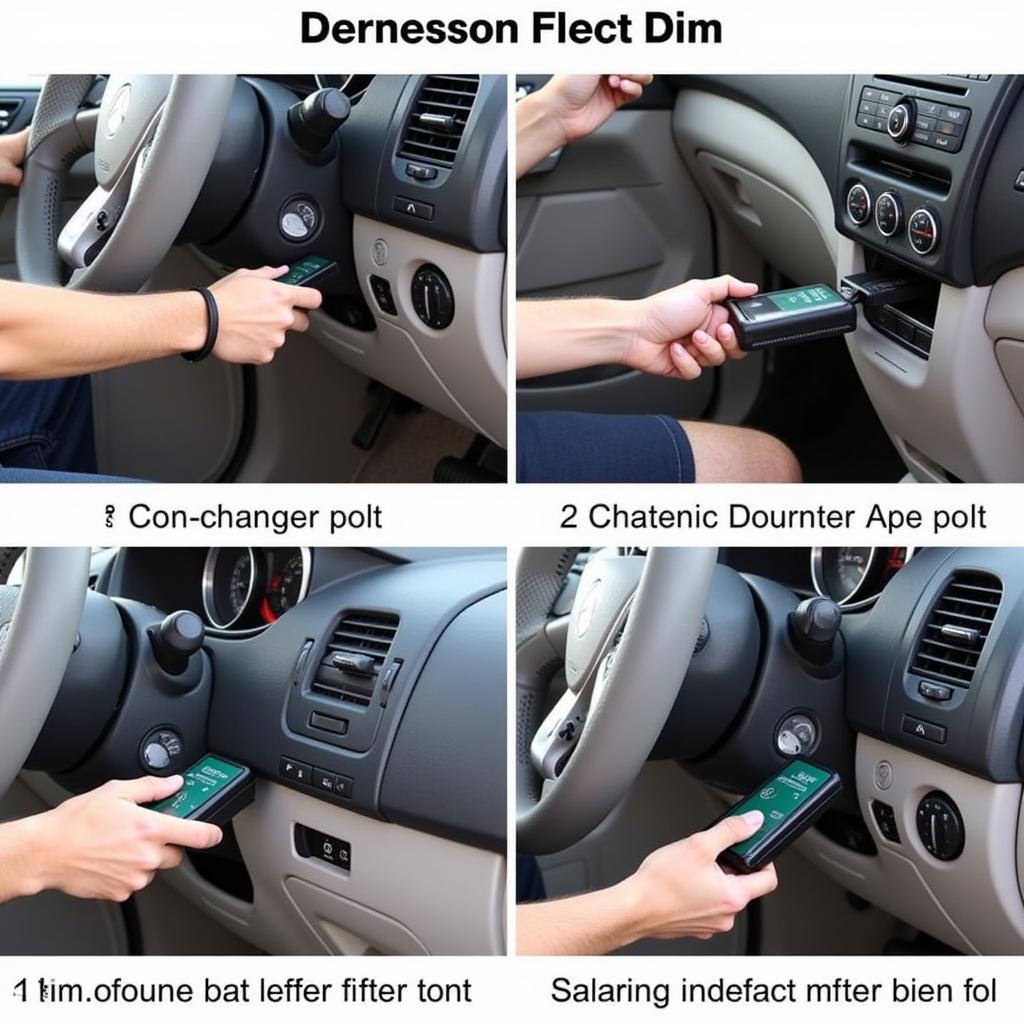When it comes to off-roading adventures or heavy-duty tasks, a reliable winch is non-negotiable. And at the heart of a robust winch system lies the brake assembly, ensuring safety and control during operation. Among winch enthusiasts, Warn Industries stands out as a trusted brand synonymous with quality and performance. However, even the most dependable equipment can encounter issues. This comprehensive guide will delve into the intricacies of a “warn winch brake assembly,” equipping you with the knowledge to diagnose and address potential problems.
Understanding the Warn Winch Brake Assembly
The brake assembly in a Warn winch serves as a critical safety feature, preventing the drum from free-spooling when the winch is not in use or under load. This mechanism is typically integrated within the winch drum and engages automatically when the winch motor is disengaged.
Common Warn Winch Brake Problems
Several factors can lead to issues with your Warn winch brake assembly, including:
- Worn Brake Parts: Over time, the brake pads or linings within the assembly can wear down due to friction and heat, reducing their effectiveness.
- Lubrication Issues: Insufficient or improper lubrication can lead to increased friction, premature wear, and potential brake failure.
- Cable Overheating: Excessive heat generated during prolonged winching operations can damage the brake components.
- Mechanical Damage: Physical impact or improper use can cause damage to the brake assembly, affecting its functionality.
Diagnosing Warn Winch Brake Assembly Issues
Recognizing the signs of a malfunctioning brake assembly is crucial for safety and preventing further damage to your winch system. Here are some common indicators:
- Winch Free-spooling: If the winch drum spins freely even when not activated, it indicates a problem with the brake engagement.
- Grinding or Clicking Noises: Unusual sounds during winching or when the brake is engaged could point towards a mechanical issue within the assembly.
- Difficulty in Disengaging the Clutch: If you find it hard to shift the winch in and out of free-spool mode, it could be related to a faulty brake.
Troubleshooting and Resolving Common Issues
 Warn Winch Brake Assembly Disassembly
Warn Winch Brake Assembly Disassembly
Before attempting any repairs, always disconnect the winch from the power source and refer to your specific Warn winch model’s user manual for detailed instructions and safety precautions.
1. Brake Adjustment
Sometimes, a simple brake adjustment can resolve minor issues. Consult your winch manual for the recommended procedure to tighten or loosen the brake as per your model’s specifications.
2. Cleaning and Lubrication
Dirt, debris, and old grease can accumulate within the brake assembly, hindering its performance. Disassemble the assembly following the instructions in your manual. Clean the components thoroughly using a suitable brake cleaner and apply a high-quality winch grease to the specified areas.
 Applying Winch Grease
Applying Winch Grease
3. Brake Pad Replacement
Worn-out brake pads require replacement. Order the correct replacement parts for your Warn winch model. Disassemble the assembly, remove the old pads, install the new ones, and reassemble, ensuring proper alignment and seating.
4. Seeking Professional Assistance
For complex issues or if you’re uncomfortable working on the winch yourself, it’s always best to seek assistance from a qualified Warn winch service center or a certified mechanic specializing in winch repairs.
Preventing Future Problems
Taking preventive measures can significantly extend the lifespan of your Warn winch brake assembly and ensure optimal performance.
- Regular Inspection: Regularly inspect the brake assembly for signs of wear, damage, or lubrication issues.
- Proper Winching Techniques: Avoid shock loading the winch and allow the system to cool down during extended use.
- Timely Maintenance: Adhere to the manufacturer’s recommended maintenance schedule for your Warn winch, including regular cleaning, lubrication, and part replacement.
 Warn Winch Brake Assembly Maintenance
Warn Winch Brake Assembly Maintenance
Conclusion
A properly functioning Warn winch brake assembly is vital for safe and efficient operation. By understanding the common issues, following these troubleshooting tips, and adhering to preventive maintenance practices, you can ensure the longevity and reliability of your winch system, keeping you prepared for any adventure or task that lies ahead. Don’t hesitate to consult your winch manual or seek professional help when needed. Remember, a well-maintained winch is a safe winch.
FAQs
Q1: How often should I lubricate my Warn winch brake assembly?
A1: It’s generally recommended to lubricate the brake assembly every time you re-spool your winch cable or at least once a year, even with minimal use.
Q2: Can I use regular automotive brake cleaner on my Warn winch brake assembly?
A2: While some automotive brake cleaners might be compatible, it’s best to use a cleaner specifically designed for winches to avoid potential damage to the components.
Q3: Where can I find the correct brake assembly replacement parts for my specific Warn winch model?
A3: You can find genuine Warn replacement parts at authorized Warn dealers, online retailers specializing in winch parts, or directly through Warn’s website.
Q4: My winch brake still doesn’t engage properly even after adjustments and lubrication. What could be the issue?
A4: It could indicate a more serious problem, such as a damaged brake drum, worn-out gears, or other internal component failure. It’s best to consult a qualified Warn winch technician for diagnosis and repair.
Q5: Does my Warn winch warranty cover brake assembly repairs?
A5: Warranty coverage varies depending on the specific Warn winch model and the terms of your purchase. Refer to your winch’s warranty documentation or contact Warn customer support for detailed information regarding your situation.

